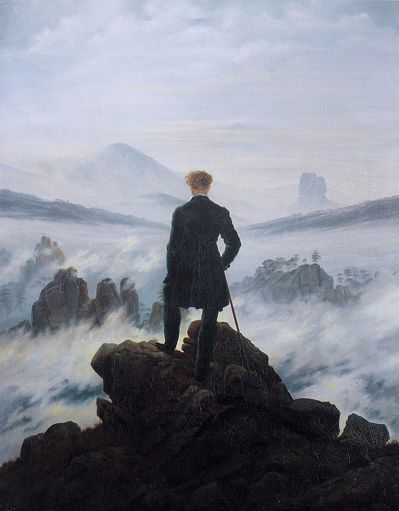메트뮤지엄 카스파 다비트 프리드리히 회고전 'Caspar David Friedrich: The Soul of Nature' (2/8-5/11)
대자연 속의 고독한 인간을 묘사했던 독일 낭만주의 화가 카스파 다비트 프리드리히(Caspar David Friedrich, 1774-1840) 회고전 'Caspar David Friedrich: The Soul of Nature'이 2월 8일부터 5월 11일까지 메트로폴리탄뮤지엄에서 열린다. 이 전시는 프리드리히의 탄생 250주년을 기념한 것이다.
Caspar David Friedrich: The Soul of Nature
February 8–May 11, 2025
@The Met Fifth Avenue in Gallery 199

Caspar David Friedrich, Wanderer above the Sea of Fog, c. 1817, Hamburger Kunsthalle, Dauerleihgabe der Stiftung Hamburger Kunstsammlungen
Overview
Caspar David Friedrich (1774–1840) reimagined European landscape painting by portraying nature as a setting for profound spiritual and emotional encounters. Working in the vanguard of the German Romantic movement, which championed a radical new understanding of the bond between nature and the inner self, Friedrich developed pictorial subjects and strategies that emphasize the individuality, intimacy, open-endedness, and complexity of our responses to the natural world. The vision of the landscape that unfolds in his art—meditative, mysterious, and full of wonder—is still vital today.
Presented in honor of the 250th anniversary of Friedrich’s birth in 2024, Caspar David Friedrich: The Soul of Nature is the first comprehensive exhibition dedicated to the artist held in the United States. Organized in cooperation with the Alte Nationalgalerie of the Staatliche Museen zu Berlin, Staatliche Kunstsammlungen Dresden, and Hamburger Kunsthalle, with unprecedented loans from more than 30 lenders in Europe and North America, the exhibition will present approximately 75 works by Friedrich. Oil paintings, finished drawings, and working sketches from every phase of the artist’s career, along with select examples by his contemporaries, will illuminate how Friedrich developed a symbolic vocabulary of landscape motifs to convey the personal and existential meanings that he discovered in nature. The exhibition will situate Friedrich’s art within the tumultuous politics and vibrant culture of 19th-century German society and, by extension, highlight the role of German Romanticism in shaping modern perceptions of the natural world.
The Artist
Caspar David Friedrich was born in Greifswald on September 5, 1774 and later studied at the Royal Danish Academy of Fine Arts in Copenhagen before settling in Dresden. He challenged academic tradition by seeking his own sources of inspiration, which he found in nature, often on walks in the scenic countryside around Dresden. And it was in Dresden that Friedrich started a family. He enjoyed a period of great success and then saw his art fall out of favor. More than half a century after his death in 1840, he was rediscovered at the 1906 German Centenary Art Exhibition in Berlin and was celebrated as a pioneer of modern art. His popularity continues to this day, perhaps because there is something profoundly moving in his art about humankind’s relationship to the natural world and the concept of nature.
The exhibition is made possible by Marina Kellen French.
Additional support is provided by the Janice H. Levin Fund, Art Mentor Foundation Lucerne, Barbara A. Wolfe, an Anonymous Foundation, The International Council of The Metropolitan Museum of Art, and Trevor and Alexis Traina.




 임충섭 작가 개인전 'Choong Sup Lim: In Between' @뉴욕한국문화...
임충섭 작가 개인전 'Choong Sup Lim: In Between' @뉴욕한국문화...
 인디언 원주민 작가 100인전 'Indigenous Identities: Here, Now ...
인디언 원주민 작가 100인전 'Indigenous Identities: Here, Now ...

